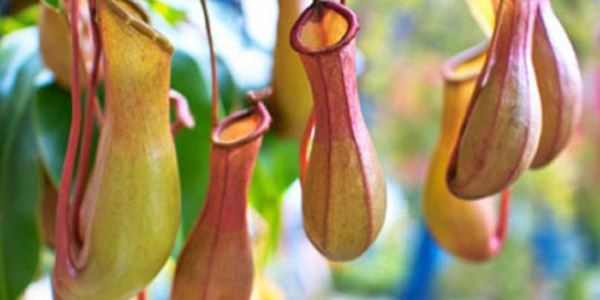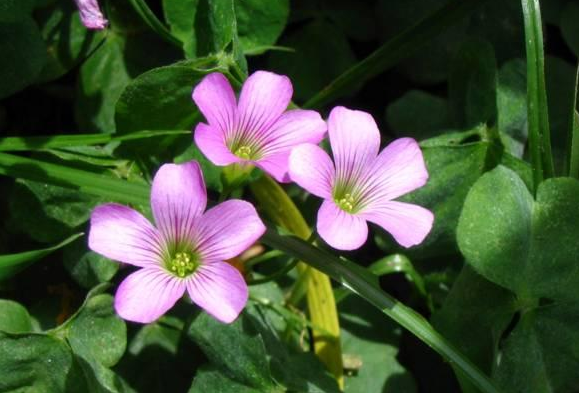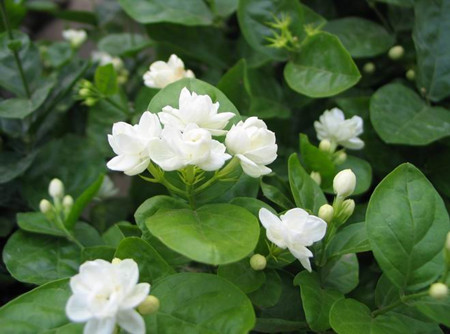How to raise pitcher plants to teach you seven tricks to make it easier to feed
Once upon a time, a newspaper report on pitcher plants sparked a buying spree in China. Its bug-catching nature and peculiar appearance are loved by the general public. But how to raise pitcher plants from the tropics to the subtropics?

1. Pitcher plant culture-temperature
The pitcher plant likes the high temperature environment and grows exuberantly at 20mur30 degrees Celsius. In the cold winter, pitcher plants almost stop growing, in order to prevent pitcher plants from freezing to death, you also need to heat them up. Ensure that the indoor temperature is not less than 10 degrees Celsius.
2. Pitcher plant culture-humidity
The level of air humidity is the key to whether the pitcher plant can produce bottles normally. To improve air humidity, you can use transparent plastic bags to cover the pitcher plant, you can easily get a high humidity environment. In addition, put the pitcher plant in the aquarium, or put it in the corner to reduce ventilation, the humidity will increase.
3. Pitcher plant culture-light
Pitcher plants like the sun, but they are afraid of bright light. So pay attention to sunscreen in summer, the general method is to build a shading net. If there is less light and it is not good, it will result in slow growth of pitcher plants, weak plants, small cages or no cages at all.
4. Pitcher plant culture-water
Pitcher plants need a large amount of water, watering 2-3 times a day when the temperature is above 30 degrees. If conditions permit, it is best to spray water vapor on the branches and leaves of pitcher plants. You can pay less water when the temperature is low, but still keep the soil moist all the time. # p# subtitle # e #
5. Pitcher plant culture-fertilization
Generally apply organic fertilizer to pitcher plants and water them in time after fertilization. If there is no organic fertilizer, or if you hate organic fertilizer, you can apply a little chemical fertilizer, the amount of chemical fertilizer should be controlled lower. Applying too much fertilizer at one time can cause the plant to wither, as if it were short of water. In addition to these fertilizers, leaf fertilizer can also be applied, and the fertilizer effect is relatively fast.
6. Pitcher plant culture-substrate
Pitcher plants like to be loose enough and well drained, and can fully retain water and provide sufficient water matrix for plants. Based on coconut shell, mixed with sawdust, perlite or pure water moss is very suitable for pitcher plants. Water moss is not only a suitable substrate for the growth of pitcher plants, but also a sign of whether the planting environment is suitable for the growth of pitcher plants.
7. Pitcher plant culture-- pest control
Pitcher plants are easy to get leaf spot, root rot, sunburn and so on. The harm of leaf spot and root rot is more serious.
How to raise pitcher plants and how to water them
Pitcher plant, which is a magical plant, can actually eat small worms, which is an attribute that many plants do not have. Let's see how pitcher plants are raised in water. How to water pitcher plants:
How to raise pitcher plants in water:
Preparation materials for hydroponics:
Vase, must be beautiful, the biggest function of hydroponics is to decorate the room. Try to choose a more beautiful transparent glass bottle.
Sharp scissors, scissors are not sharp, it will be very difficult in the operation.
The better growing pitcher plant.
Culture medium, rooting agent, water, barbed wire, colored pebbles
The steps of hydroponics:
First of all, prepare the culture medium. Pour 3 stroke 2 water into the bottle, add a few drops of culture medium, and set aside.
Cut the branches into plants and retain the bud points on the branches, which are easy to grow new branches. Don't leave too many leaves, just 1 or 2 leaves.
Put the rooting agent on the cut of the branch, then put the branch into the water, and pay attention to the leaf not to soak in water, so as not to pollute the water quality.
Put a little colored stone in the bottle to increase the effect.
Fix the branches with barbed wire and keep them upright.
With the above five steps, the hydroponics has been completed and the rest is maintenance. In the initial stage, change the water once every 3 days, wait until it takes root, change the water once a week or so, and add nutrient solution each time.
How to water pitcher plants:
When will it be watered
Pitcher plants are very strict in moisture requirements, watering time should be strictly controlled, can not be too dense and have to water. Try to keep the soil moist. As for the time of watering, water it twice a day, once in the morning and once in the evening. Remember not to water at noon.
3. Water quality requirements of pitcher plants.
Pitcher plants have lower requirements for water quality, as long as they are not very dirty and do not contain bacteria, ordinary water is OK. However, if you often use the immersion method to water, it will cause salt accumulation, and there will be a lot of yellow-white scale on the surface of the soil. The surface soil should be changed in time.
4. How to water
There are many ways of watering, such as watering type, basin type, spray type, immersion type. Pitcher plants are suitable for growing in moist but relatively loose soil, so basin watering and immersion watering are generally used.
Pot watering: directly into the soil, try to avoid watering flowers and leaves.
Immersion watering: in order to avoid the loss of nutrients in the soil, soak the basin into water and make the soil moist.
This is the end of the method of aquaculture of pitcher plants. Do not see that the cages of pitcher plants are lovely, just pour water into them and they will die. Be careful.
How to raise pitcher plants? Summary of pitcher plant pictures
The pitcher plant can prey on insects and its unique appearance is inseparable. Each leaf of the pitcher plant grows an insect cage, which is specially used to hunt insects. The pitcher plant secretes narcotic honey to attract insects, and the insects fall into the cage after anesthesia and are digested by digestive juice. This is the predation process of pitcher plants.
[recommended reading] touching vanilla green Spring Festival flowers hydroponic culture rich bamboo African jasmine rose succulent plant tropical plant
How to raise pitcher plants? Pitcher plant picture collection-
[plant archives]-
English name: pitcher plant
Scientific name: Nepenthes sp.
Aliases: pitcher plant, monkey water bottle, monkey courtyard, pig cage, Lei Gong pot
Family: pitcher plant family Nepenthaceae
Genus: Nepenthes
Distribution of origin: Indonesia, Malaysia, Philippines, China, Australia and other tropical regions originating in Southeast Asia
Morphological features: perennial lianas, woody or semi-woody stems, epiphytic to trees or terrestrial, climbing or growing along the ground. The leaves are generally oblong with caged vines at the end. The end of the cage vine forms a bottle-shaped or funnel-shaped trap with a cage cover. The pitcher plant does not bloom until it has grown for many years, and the flowers are usually racemes, dioecious. The flowers are small, light and fragrant during the day, and strong and smelly at night.
How to raise pitcher plants? -
The pitcher plant has no dormant period, and the basic requirements for its growth are light, humidity, moisture, temperature, nutrients and growth matrix.
Growth habits of ◆ pitcher plants: there are many species of pitcher plants, about 120 species in the world. Among them, it is divided into highland species and lowland species, highland species prefer cold, cool and humid, do not avoid high temperature during the day, and must be maintained at about 15 ℃ at night; lowland species like warm and humid.
Light and temperature management of ◆ pitcher plants: light is one of the most important factors in growing large, bright insect traps. All-day notes darken the color of plants and hinder their growth. Bright astigmatism is more suitable for pitcher plants. Provide enough air humidity, medium soil moisture and enough light to make the leaves as red as red wine. The suitable growth temperature of pitcher plant is 25-30 ℃, 21-30 ℃ from March to September, and 18-24 ℃ from September to March of the following year. The winter temperature is no less than 16 ℃.
Water management of ◆ pitcher plants: pitcher plants do not have high requirements for water content in the cultivation medium, and usually do not like the cultivation medium which is too wet and airtight. When growing pitcher plants, it is necessary to keep the soil moist at all times. The matrix should not extrude water and be loose. Timely supply of high-quality soft water for pitcher plants is more beneficial to its growth.
Humidity management of ◆ pitcher plants: the humidity of the air is the key to whether the pitcher plants can produce bottles normally. To improve air humidity, you can use transparent plastic bags to cover the pitcher plant, you can easily get a high humidity environment. In addition, put the pitcher plant in the aquarium or in the corner to reduce ventilation and the humidity will increase. As long as the new trap grows out, try to gradually reduce the air humidity and make the pitcher plant suitable for a drier environment.
Substrate management of ◆ pitcher plants: pitcher plants like to be loose enough and well drained, and can fully retain water to provide sufficient water substrate for plants. Based on coconut shell, the mixed matrix of sawdust, perlite or pure water moss is very suitable for pitcher plants. Water moss is not only a suitable substrate for the growth of pitcher plants, but also a sign of whether the planting environment is suitable for the growth of pitcher plants.
Fertilization management of ◆ pitcher plants: if pitcher plants are preyed on by insects, there is no need to apply fertilizer. However, when cultivated indoors, there are usually not enough insects to be caught by pitcher plants, instant foliar fertilizer can be used, and non-slow release fertilizers should not be applied directly to the soil. It should be noted that pitcher plants are insectivorous plants that already have the ability to obtain nutrients by catching insects or small animals. It doesn't hurt to want to be fed manually, but it is not recommended to feed too many or too large insects, such as cockroaches. Because it takes weeks for large insects to be completely digested, the rancid smell emitted during this period can be unbearable.
Diseases and insect pests of ◆ pitcher plants: pitcher plants are easy to get leaf spot, root rot, sunburn and so on. The harm of leaf spot and root rot is more serious.
[more Encyclopedia of plants]
Tequila canna flowers on the other side forget me dandelion Dendrobium candidum yew kapok cotton sweet-scented osmanthus crabapple hydroponic plants
Home fengshui plant bedroom fengshui plant plum blossom aloe jasmine radiation protection plant potted plant potted plant to make drug plant
Mistletoe indoor flower rich tree evergreen potted production of red palm mint stone geranium garden crab claw orchid plain sailing
- Prev

How long is the florescence of sorrel?
Sorrel, now many people like breeding, and the flowers that bloom are also more beautiful. Let's take a look at the cultivation method of sorrel. How long is the flowering time of sorrel: the culture method of sorrel: sowing time, sorrel is propagated through tubers.
- Next

We should pay attention to these key points of how to raise jasmine.
Many people who have never had flowers want to keep a plant at home. Jasmine is undoubtedly one of the best choices. It has bright and beautiful colors and blossoms for a long time, but how to raise jasmine? What do you need to pay attention to in the process of breeding? 1. If plants want to grow healthily and normally
Related
- Fuxing push coffee new agricultural production and marketing class: lack of small-scale processing plants
- Jujube rice field leisure farm deep ploughing Yilan for five years to create a space for organic food and play
- Nongyu Farm-A trial of organic papaya for brave women with advanced technology
- Four points for attention in the prevention and control of diseases and insect pests of edible fungi
- How to add nutrient solution to Edible Fungi
- Is there any good way to control edible fungus mites?
- Open Inoculation Technology of Edible Fungi
- Is there any clever way to use fertilizer for edible fungus in winter?
- What agents are used to kill the pathogens of edible fungi in the mushroom shed?
- Rapid drying of Edible Fungi

